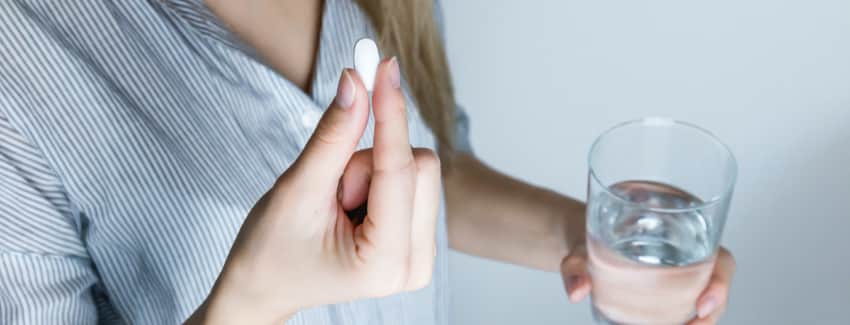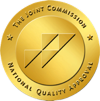If you have ever been to the doctor for treatment with something that causes pain—broken bone, back pain, post-surgery—you may have been prescribed Vicodin to ease your recovery. While Vicodin can be very effective in helping to ease your pain, it can be risky because it can become addictive. Because it is such a commonly prescribed medication, addiction to Vicodin is also a common occurrence.
Vicodin addiction can happen in any individual of any age. However, younger people seem especially drawn to abusing the drug. In fact, the National Institute on Drug Addiction reported in their survey that 1.9 million young adults aged 18 to 25 misused opioids within the previous year.

What Is Vicodin
Vicodin is a prescription opioid. Doctors prescribe it to control pain (moderate to severe). Unfortunately, it’s also extremely addictive and even made it on the National Institute On Drug Abuse’s list of the most commonly abused prescription drugs in the U.S.
Vicodin is a prescription tablet consisting of hydrocodone (synthetic opioid) and acetaminophen (Tylenol). Hydrocodone activates the same neuroreceptors as heroin and other opiate drugs.
There is 300mg to 325mg of acetaminophen in each Vicodin tablet, but there are several different hydrocodone dosage levels (5mg, 7.5mg and 10mg). You’re typically prescribed on a tablet every four to six hours as needed for pain. Addicts, however, often take much higher doses.
Symptoms
Addiction is characterized by the compulsive urge to take the drug despite the adverse consequences. Like other substances, Vicodin can cause negative health consequences. Two of the most common are the possibility of addiction and damage to the liver. Abusing the drug can lead to both mild and serious addiction effects, such as:
- Dizziness
- Drowsiness
- Euphoria
- Calm and relaxed feeling
- Lightheadedness
- Anxiety
- Constipation
- Nausea and vomiting
- Aches and cramps
- Depressed breathing rate
- Depressed heart rate
- Depression
- Muscle pain
It can be difficult to recognize when there’s an addiction to the drug. Some individuals develop a dependence (they have built up a tolerance to the drug and withdrawal) on Vicodin and don’t even know it until they try to stop taking it.
Identify Addiction to Vicodin
Those with a Vicodin addiction first become dependent on the drug. They then start engaging in various destructive behaviors in order to avoid withdrawal and experience a high.
For instance, individuals with addiction might:
- Lie about using the drug and become defensive if told to stop taking it.
- Obtain multiple prescriptions from different doctors and fill them at different pharmacies.
- Intentionally hurt themselves in order to have Vicodin prescribed to them.
- Purchase pills illegally or steal pills.
The Diagnostic and Statistical Manual of Mental Disorders V(DSM-V) has outlined. The DSM-V states, that to receive a substance use disorder diagnosis, within a 12-month period, you need to meet two or more of the 11 criteria. If you do, you might have a mild substance use disorder. You might have a moderate substance use disorder if you meet four to five and six and over indicates the possibility of a severe substance use disorder. The DSM-V’s 11 criteria are as follows
- Taking Vicodin longer than you’re meant to or taking it in larger amounts.
2. Spending a great deal of time obtaining, using or recovering from Vicodin use.
3. Wanting to, but not managing to stop using or cut down on Vicodin.
4. Urges and cravings to use the drug.
5. Not being able to keep up with your responsibilities at home, work or school due to using the drug.
6. Giving up important occupational, social or recreational activities due to using the drug.
7. Continuing to use the drug despite it causing issues in relationships.
8. Using the drug again and again despite it putting you in danger.
9. Continuing to use the drug despite you knowing you have a psychological or physical issue that Vicodin could have caused or made worse.
10. Building up a tolerance for Vicodin and requiring more of it to achieve the same effect.
11. Developing withdrawal symptoms (i.e. sweating, insomnia or sleep problems, intense cravings), which taking more Vicodin can relieve.
How to Obtain Addiction Treatment Help
Once you develop a physical dependence on Vicodin, it’s more likely you’ll become addicted to the drug. Withdrawals to Vicodin can be painful and intense and many individuals will continue using the drug to avoid them.
The most successful way you or your loved one can break an addiction to Vicodin is by receiving professional treatment. This type of treatment provides support and therapy in a recovery conducive setting. It also provides a detox program that can help you successfully and safely manage symptoms of withdrawal with medication.
Therapy
Therapy can be extremely beneficial for you or your loved one when dealing with addiction, since it provides new coping skills and mechanisms that will help deal with things like:
- Anger
- Stress
- Loss
- Disappointment
There’s also the option to enroll in one-on-one or group counseling sessions. In group sessions, you have the ability to share stories and learn from each other. Simply knowing you’re not alone in your addiction can give you strength and hearing others’ stories of recovery can be inspiring.
Therapy might have to last for several years. It takes the body a long time to clear Vicodin out of the system completely and function normally on both a psychological and physical level. You might experience physical cravings to the drug for years, even if you’re feeling mentally stable.
Medications
Medications help ease addiction symptoms and make it more likely you’ll recover. Two common types of medication are:
Buprenorphine
Buprenorphine activates the same brain receptors as Vicodin and releases dopamine. This helps relieve withdrawals.
Naltrexone
Naltrexone decreases your cravings for the drug and blocks its effects if you should relapse.
If you require medical detoxification, you’ll be admitted into the treatment center where the experienced, professional staff will administer the drug detox using medications that will ease your symptoms of withdrawal.
Struggling with addiction to Vicodin alone can be difficult and the healing atmosphere of EagleCrest Recovery will provide you or your loved one with the support and addiction treatment required for making a successful recovery. Contact us to learn more about our services.


